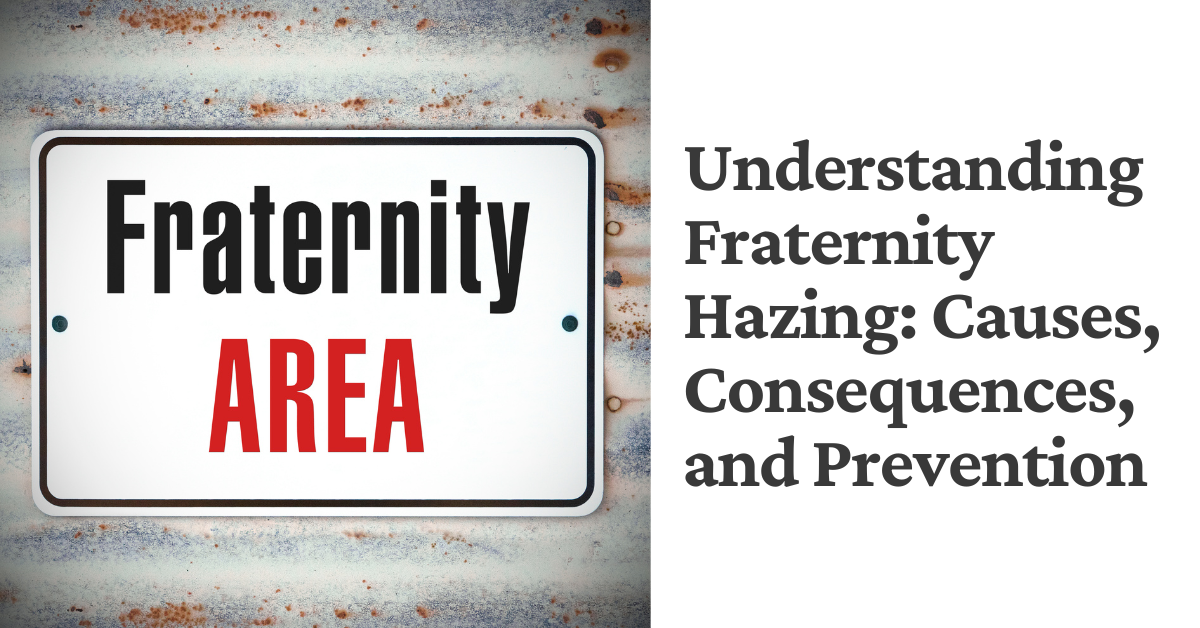
Understanding Fraternity Hazing: Causes, Consequences, and Prevention
Fraternity life is often associated with camaraderie, brotherhood, and lifelong friendships. However, in some cases, it has been marred by the practice of hazing – a harmful tradition that can have serious physical, emotional, and psychological consequences. In this blog post, we'll delve into the complex issue of fraternity hazing, exploring its causes, the impact it can have on individuals and the community, and most importantly, how to prevent it.
What is Fraternity Hazing?

Causes of Fraternity Hazing

Tradition and Peer Pressure: Hazing may stem from the belief that enduring hardships during initiation will build stronger bonds among members. Peer pressure and the desire to conform to established norms can perpetuate these harmful practices.

Misguided Notions of Brotherhood: In some cases, hazing is seen as a rite of passage that separates the committed from the uncommitted. However, true brotherhood is built on mutual respect, trust, and shared values, not on demeaning rituals.

Lack of Education: Some new members may not be fully aware of their rights and what constitutes hazing. Education about the harmful consequences is crucial to prevent such practices.
Consequences of Fraternity Hazing

Physical and Emotional Harm: Hazing activities can lead to physical injuries, ranging from minor bruises to severe trauma. Emotional scars may also result, leading to decreased self-esteem, anxiety, depression, and other mental health issues.

Undermining Trust: Hazing can erode trust among fraternity members and diminish the sense of unity that should be at the core of brotherhood.

Reputation Damage: Instances of hazing can tarnish the reputation of the entire fraternity and the broader Greek community. This can have long-lasting negative effects on recruitment, campus relationships, and alumni support.
Prevention and Change

Education: Provide comprehensive education about hazing to all members, emphasizing its negative effects on individuals and the fraternity as a whole.

Clear Policies and Consequences: Develop and enforce clear anti-hazing policies, outlining specific behaviors that are prohibited. Explain the repercussions of breaking these rules.

Alternative Initiations: Foster creative and positive initiation traditions that emphasize teamwork, camaraderie, and the values of the fraternity.

Leadership Training: Train current members in leadership skills that promote positive team dynamics and encourage respect for new members. Reporting Mechanisms: Establish anonymous reporting channels for individuals to report any incidents of hazing without fear of retaliation.
Reporting Mechanisms: Establish anonymous reporting channels for individuals to report any incidents of hazing without fear of retaliation.

Positive Role Modeling: Encourage alumni involvement to showcase the benefits of a hazing-free fraternity experience.
Conclusion
Fraternity hazing is a destructive practice that has no place in modern society. It goes against the very essence of brotherhood and can cause irreparable harm to individuals and the fraternity's reputation. By educating, raising awareness, and implementing proactive measures, we can pave the way for a safer and more inclusive fraternity experience, one that embodies the values of unity, respect, and personal growth. Remember, a strong brotherhood is built on positive traditions that uplift and inspire, rather than harm or demean.
Like this blog posts? You can read more informative blog posts here such as The Importance Of Understanding Your Fraternity's History
